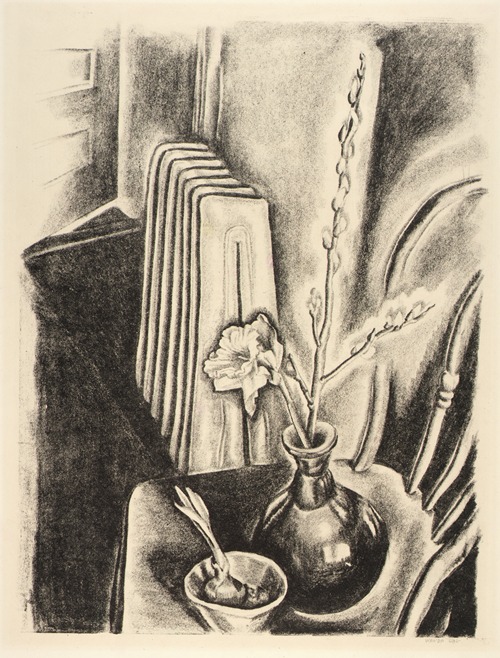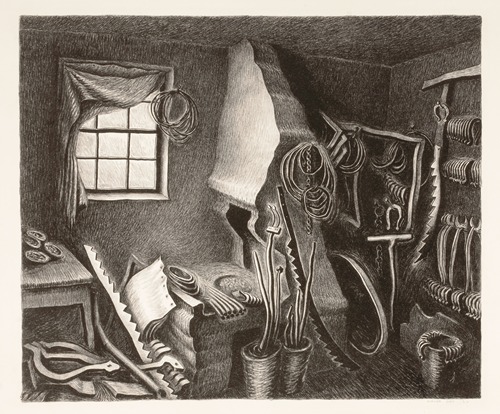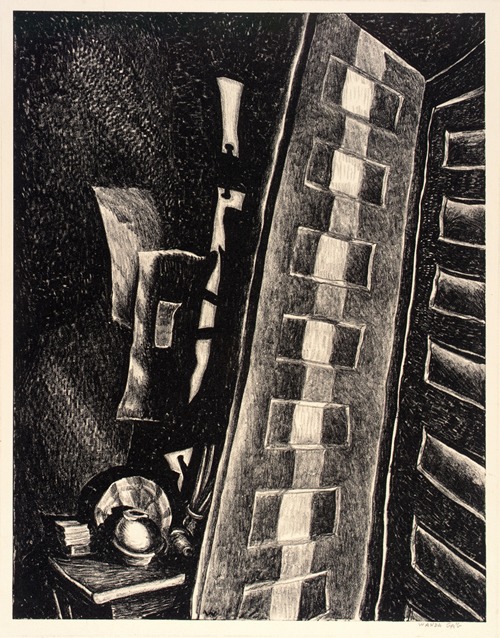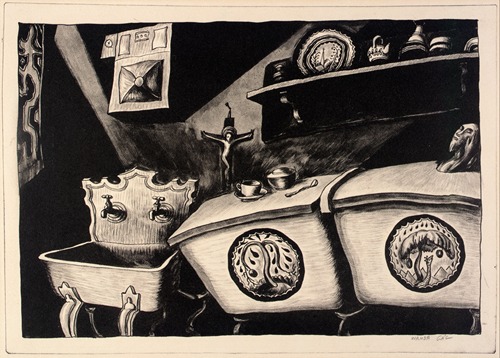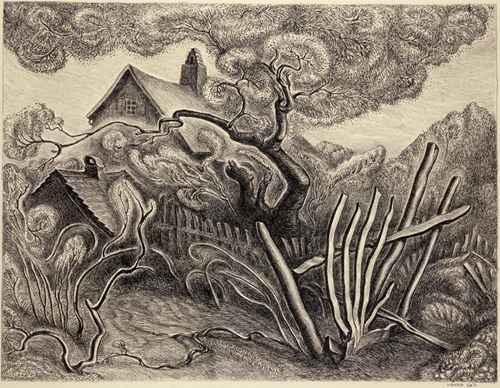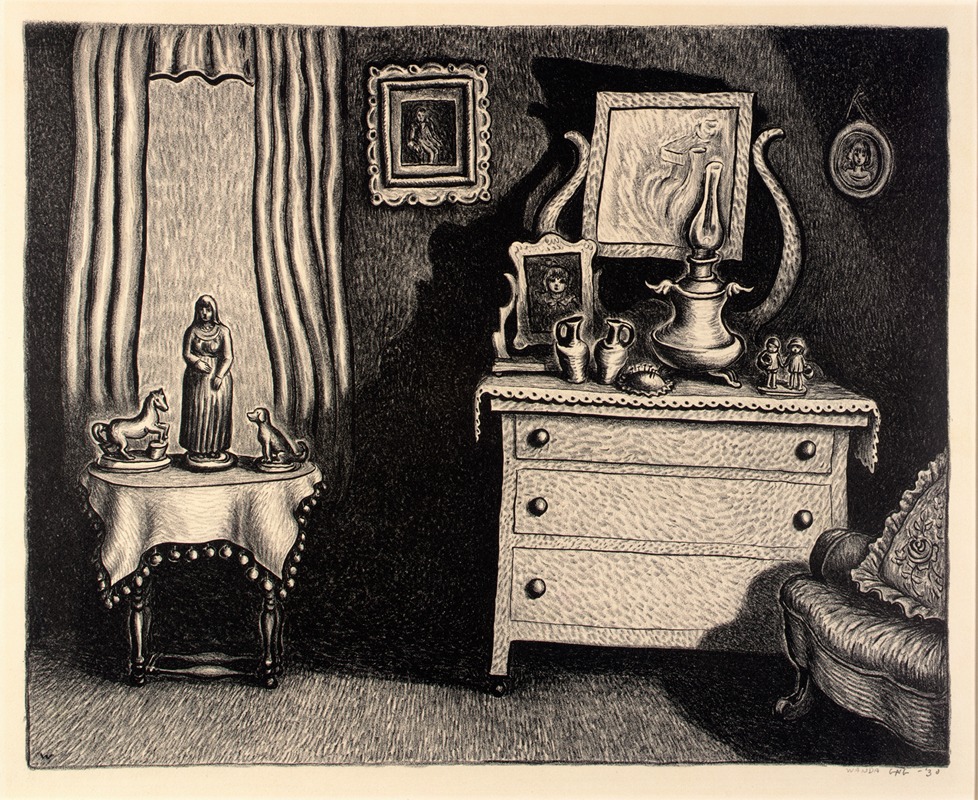
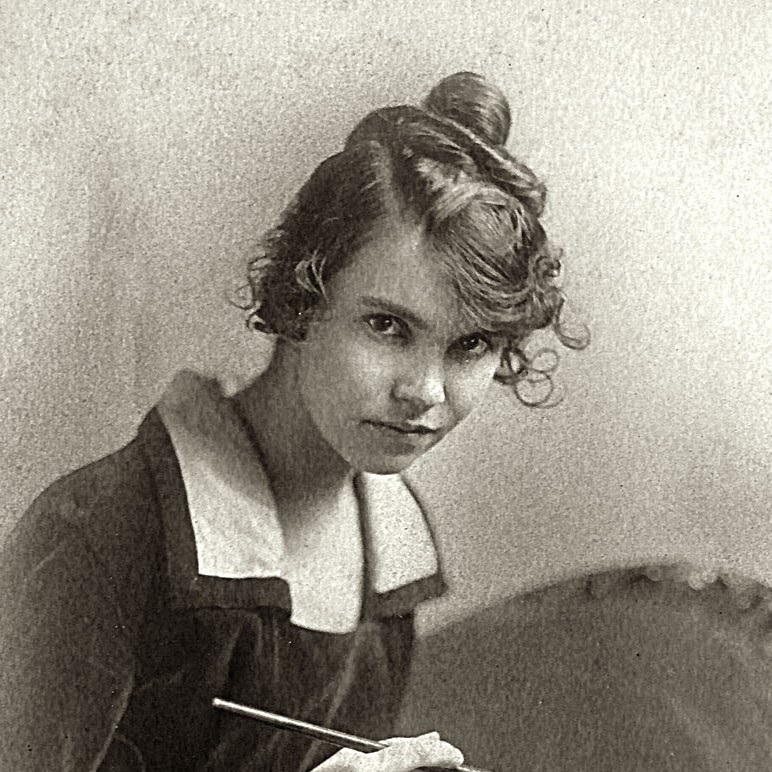
Wanda Hazel Gág was an American artist, author, translator, and illustrator. She is best known for writing and illustrating the children's book Millions of Cats, the oldest American picture book still in print. Gág was also a noted print-maker, receiving international recognition and awards. Growing Pains, a book of excerpts from the diaries of her teen and young adult years, received widespread critical acclaim. Two of her books were awarded Newbery Honors and two received Caldecott Honors. The New York Public Library included Millions of Cats on its 2013 list of 100 Great Children's Books.
Wanda Hazel Gág was born March 11, 1893, in the German-speaking community of New Ulm, Minnesota, to Elisabeth (née Biebl) Gag and the artist and photographer Anton Gag. The eldest of seven siblings, Wanda was 15 when her father died of tuberculosis. His final words to her were: "Was der Papa nicht thun konnt', muss die Wanda halt fertig machen." (transl. What Papa couldn't do, Wanda will have to finish.)
Following his death, the family was on welfare and some townspeople thought that Wanda should quit high school and get a steady job to help support her family. Despite this pressure, Wanda continued with her high school education. While still a teenager her illustrated story Robby Bobby in Mother Goose Land was published in The Minneapolis Journal in their Junior Journal supplement. After graduating in June 1912, she taught country school in Springfield, Minnesota, from November 1912 to June 1913.
In 1913, Gág began a platonic relationship with University of Minnesota medical student Edgar T. Herrmann who exposed her to new ideas in art, politics and philosophy. With a scholarship (and the aid of friends), she attended The Saint Paul School of Art in 1913 and 1914. From 1914 to 1917 she attended The Minneapolis School of Art under the patronage of Herschel V. Jones. While there, she became friends with Harry Gottlieb and Adolf Dehn. Her first illustrated book commission (as Wanda Gäg) was A Child’s Book of Folk-Lore— Mechanics of Written English by Jean Sherwood Rankin (1917).
In 1917, Gág won a scholarship to the Art Students League of New York where she took classes in composition, etching and advertising illustration. By 1919, Gág was earning her living as a commercial illustrator.
During her time in New York she became a member of the Society of American Graphic Artists. In 1921, she became a partner in a business venture called Happiwork Story Boxes. The boxes were decorated with story panels on its sides.
An illustration of Gág's was published in Broom: An International Magazine of the Arts in 1921. Gág's art exhibition in the New York Public Library in 1923 was her first solo show. She began signing her name "Gág" around this time.
In 1924, Gág's work was published in a short-lived folio-style magazine with artist William Gropper. In 1925 she created a series of illustrated crossword puzzles for children that was syndicated in several newspapers. She began to sell her lithographs, linoleum block prints, water colors and drawings through the Weyhe gallery where she had developed a relationship with its manager, Carl Zigrosser. Gág's one-woman-show there in 1927 led to her being acclaimed as "… one of America’s most promising young graphic artists… "
In 1927, her article These Modern Women: A Hotbed of Feminists was published in The Nation, drawing the attention of Alfred Stieglitz and prompting Egmont Arens to write: "The way you solved that problem (her relationship with men) seems to me to be the most illuminating part of your career. You have done what all the other ‘modern women’ are still talking about." Gág’s illustrations were published on the covers of the leftist magazines The New Masses and The Liberator.
In a 1929 New York Times review, Elisabeth Luther Cary described Gág's print Stone Crusher: "Pure imagination leaps out from dusky shadows and terrifies with light, an emotional source difficult to analyze."
For a 1934 auction organized by Langston Hughes to raise funds for the defense of the Scottsboro Boys, Gág contributed an original drawing from ABC Bunny, "'F' is for Frog."
Her work was recognized internationally and was selected for inclusion in the American Institute of Graphic Arts Fifty Prints of the Year in 1928, 1929, 1931, 1932, 1936, 1937 and 1938. Her work was featured in exhibitions at The Whitney Museum of American Art in 1934, 1936, 1938, 1939, 1940, and 1941. In 1939 Gág's work was shown at The Museum of Modern Art exhibition Art in Our Time and at the New York World's Fair American Art Today show.
In 1927 Gág's illustrated story Bunny's Easter Egg was published in John Martin's Book, a magazine for children. Gág's work caught the attention of Ernestine Evans, director of Coward-McCann's children's book division. Evans was delighted to learn that Gág had children's stories and illustrations in her folio and asked her to submit her own story with illustrations. The result, Millions of Cats, had been developed from a story that Gág had written to entertain the children of friends. It was published in 1928. Anne Carroll Moore wrote: "… It bears all the hallmarks of becoming a perennial favorite among children, and it takes a place of its own, both for the originality and strength of its pictures and the living folk-tale quality of its text. A book of universal interest to children living anywhere in the world… A kinship with all children made her respect their intelligence, and gave them at once ease and joy in her company. With as sure an instinct for the right word for the ear, as for the right line for the eye, Wanda Gág became quite unconsciously a regenerative force in the field of children's books." Millions of Cats won a Newbery Honor award in 1929, one of the few picture books to do so. It is the oldest American picture book still in print. It entered the public domain in the United States in 2024.
In 1935 Gág published the "proto-feminist" Gone is Gone; or, the Story of a Man Who Wanted to Do Housework.
To encourage the reading of fairy-tales, Gág translated and illustrated Tales from Grimm in 1936. English critic Humbert Wolfe, commenting on Gág's translation, wrote: "From the very first page it was clear that Miss Gág was chopping away a perfect brushwood of clumsy phraseology to let in the light." Two years later she translated and illustrated the Grimm story Snow White and the Seven Dwarfs in reaction to the "trivialized, sterilized, and sentimentalized" Disney movie version. Her essay I Like Fairy Tales was published in the March 1939 issue of The Horn Book Magazine. More Tales from Grimm was published posthumously in 1947. Four of her translated fairy tales were later released with illustrations by Margot Tomes.
Gág enjoyed living and working in the country. In the early 1920s she spent summers drawing at various locations in rural New York and Connecticut. She rented a three-acre farm called "Tumble Timbers" in Glen Gardner, New Jersey, from 1925 to 1930. In 1931 she bought a larger farm she named "All Creation" in Milford, New Jersey. Two of her siblings, Flavia [d] and Howard, lived there with her.
Gág's brother Howard contributed the hand lettering in Millions of Cats and The ABC Bunny. Gág encouraged her sister Flavia to create illustrated books for children.
In addition to Earle Humphreys (her long-time paramour and business manager), Gág had, sometimes concurrently, other lovers: Adolph Dehn, Lewis Gannett, Carl Zigrosser, and Dr. Hugh Darby. She married Humphreys on August 27, 1943.
Gág died from lung cancer in New York City, aged 53, on June 27, 1946.

